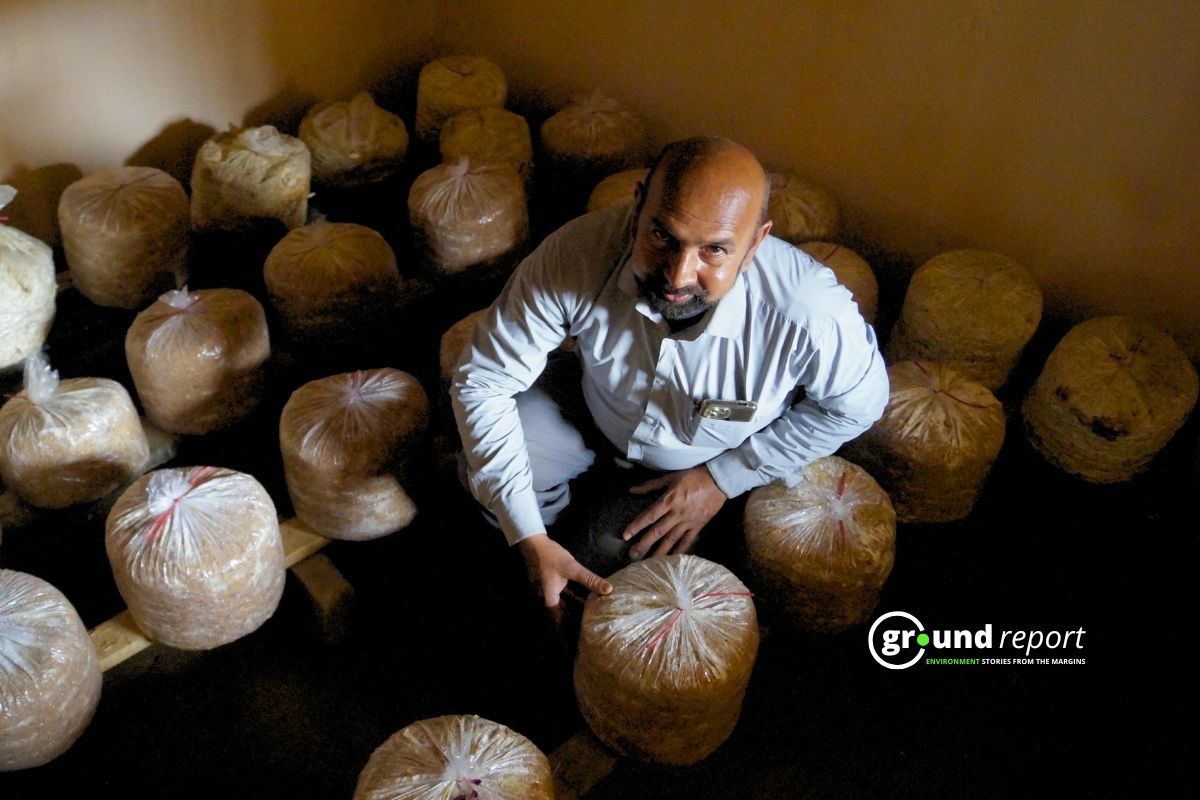When we visited Rashida (name-changed) in April 2024, she was in the middle of an afternoon nap to restore her health. She had taken a much-needed off day due to bad health from her daily waste-picking job at the Bhalswa landfill in Delhi. Her job is informal, and she manages the city’s solid waste. As per the Chintan NGO 2018 survey, the informal sector in SWM employs almost 1% of the urban population. Another 2017 data reflects this number to be 4 million.
The flaws in India’s waste management system have created an economy of its own. Rashida is part of this system. She climbs around 3-4 km early in the morning, almost every day, to the landfill. In the extreme heat too, the work doesn’t stop. Waste pickers, mostly women, segregate waste at the landfill site. This segregated waste is then sold to a contractor at a non-negotiable rate for each segregated material. But how will many, like Rashida, manage if they fall sick or don’t sell waste?
“We skip meals; that’s how we manage,” she responded.
Due to such hazardous conditions, several informal waste workers have skin diseases. Some even consume alcohol, and other drugs before climbing the garbage heap. As suggested, this intoxication helps them evade foul smells and toxic gases at the site.
Heatwaves
‘Bhaiya, a flush of heat comes on our face when we remove the garbage from the big pill on the landfill’, said another woman beside Rashida.
All the landfill sites are extremely toxic and hazardous. Both the organic and inorganic waste are dumped together and often react at the landfill site. This reaction produces heat, releasing gases like carbon dioxide, methane, and more, contributing to greenhouse gas emissions. As Rashia explained, they make sheds of sarees during extreme summers on the landfill itself. However, she quickly added, people faint also. Then, ‘we have to get them down then’, she concluded.
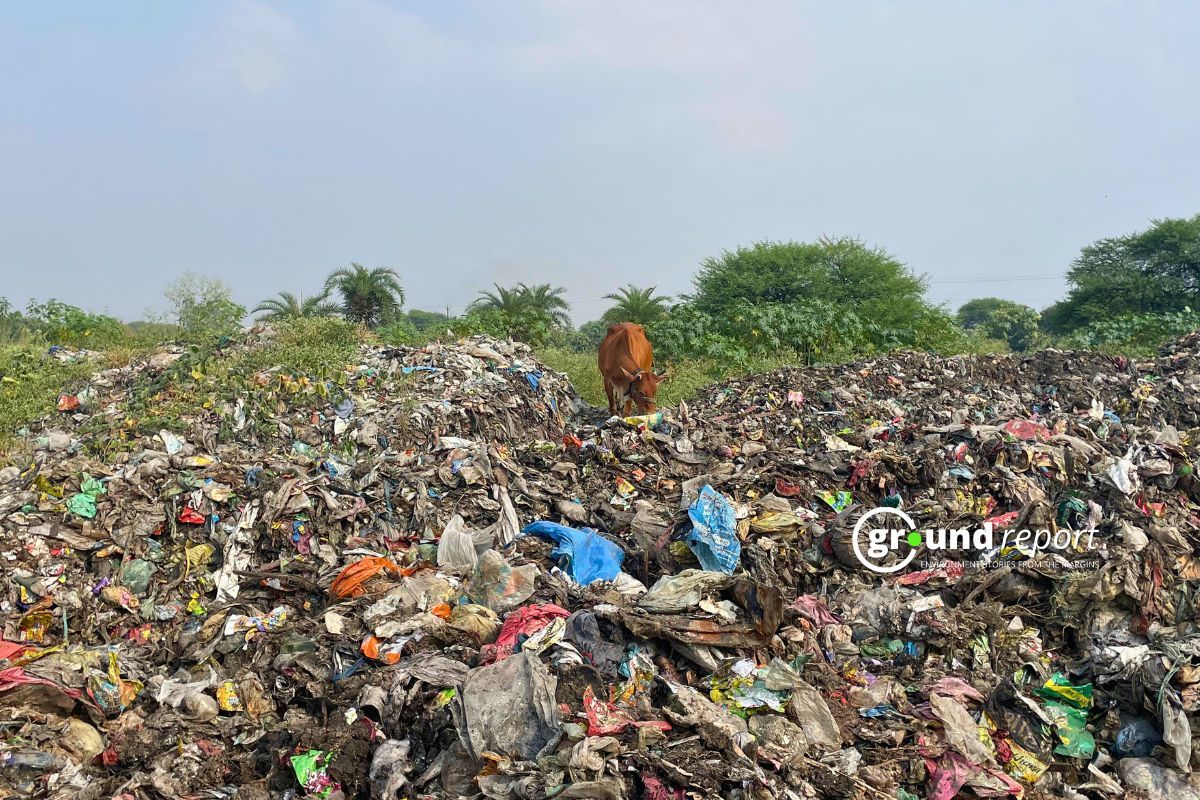
India experienced more heatwave days than ever, 20-38 days across different parts of India. In India, 75% of the population is employed in heat-related labour. Add to that, the mechanism for noting heat-related deaths, which is being severely criticised. The National Institute for Occupational Safety and Health in the United States allows continuous work at high intensities in hot environments up to 34°C with 30 per cent relative humidity.
Amidst this, an analysis published in the Significance Magazine stated that extreme heat affects women more than men. The reasons for the same can’t be pointed out due to a lack of equality data. Many women, like Rashida, are obliged to climb the landfill site and earn their livelihood.
Housing and related issues
The struggles for Rashida don’t end here. She has asked her landlord to provide them with proper toilets or water. However, when we visited, there was no functional toilet or, even proper drainage. Rashida, while sitting on a pile of waste, commented,
“We don’t have documents… We pay what he [the landlord] asks and live.”
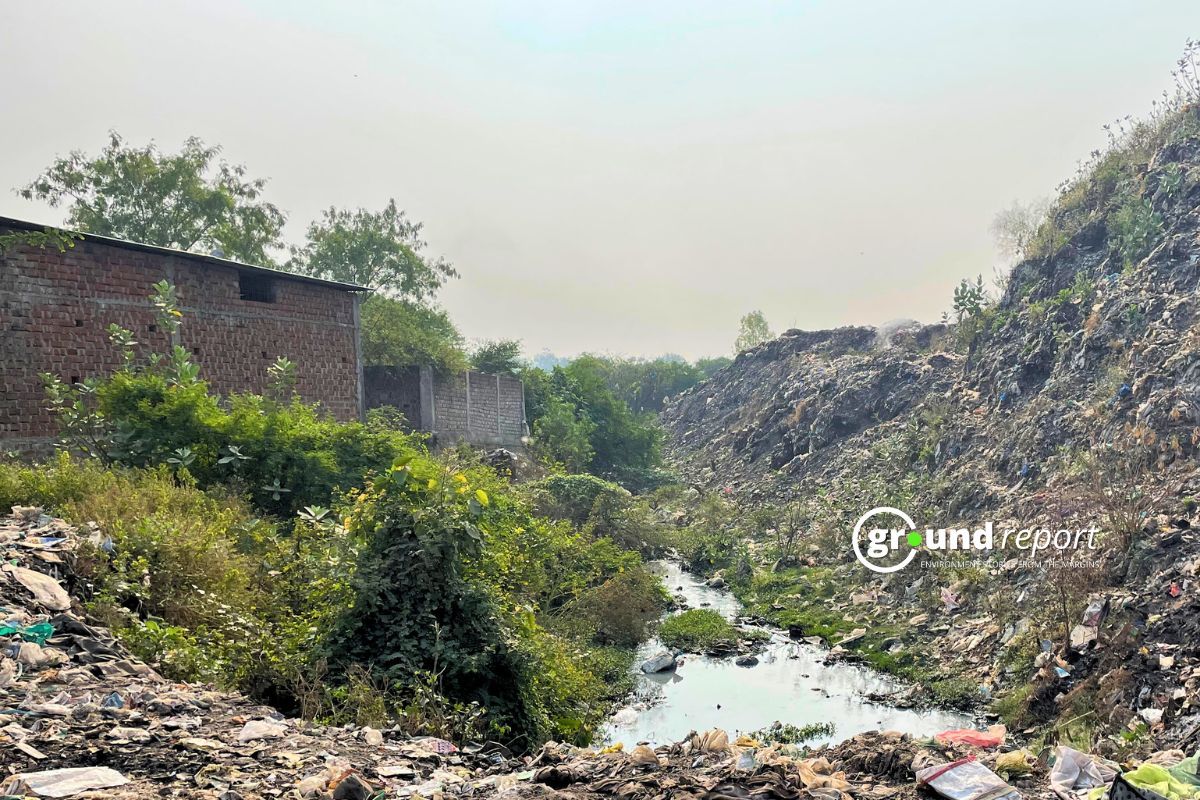
As per the Housing and Land Rights Network survey in 2023, none of the respondents found their place suitable to protect from the heat and weather. With inaccessibility to basic public infrastructure, the urban poor, particularly women, struggle to cope with the impacts of extreme weather. As per the World Resource Institute (WRI) study, in comparison to the neighbouring housing societies, the Mumbai slums are 6°C warmer. This could be due to a myriad of reasons; however, this highlights the uneven impact on low-income communities in urban spaces. The homes in urban slums tend to have metal roofs. Therefore, an increased temperature inside the house.
Due to the phenomenon known as urban heat islands, the cities are adversely affected by the heat as the roads, buildings, etc. absorb and reemit the heat.
Erratic rainfall and tropical disease
If summers end in June-July, rain starts pouring in July, further impacting the work of the waste pickers. The path to the heap becomes too slippery to climb. However, people climb as it is their earning. On the other hand, some waste pickers, instead of climbing the heap, stroll on the streets and pick waste. They segregate the waste at home or get it home after segregation to eventually sell it.
Seema (name-change)—one of the waste pickers—says, “We have to keep the waste outside the house… We have limited space inside the house.” Due to untimely rainfall, all get drenched and spoiled, particularly cardboard waste. With no negotiation power, the contractor doesn’t give them whatever it deems fit; mostly it is nothing.
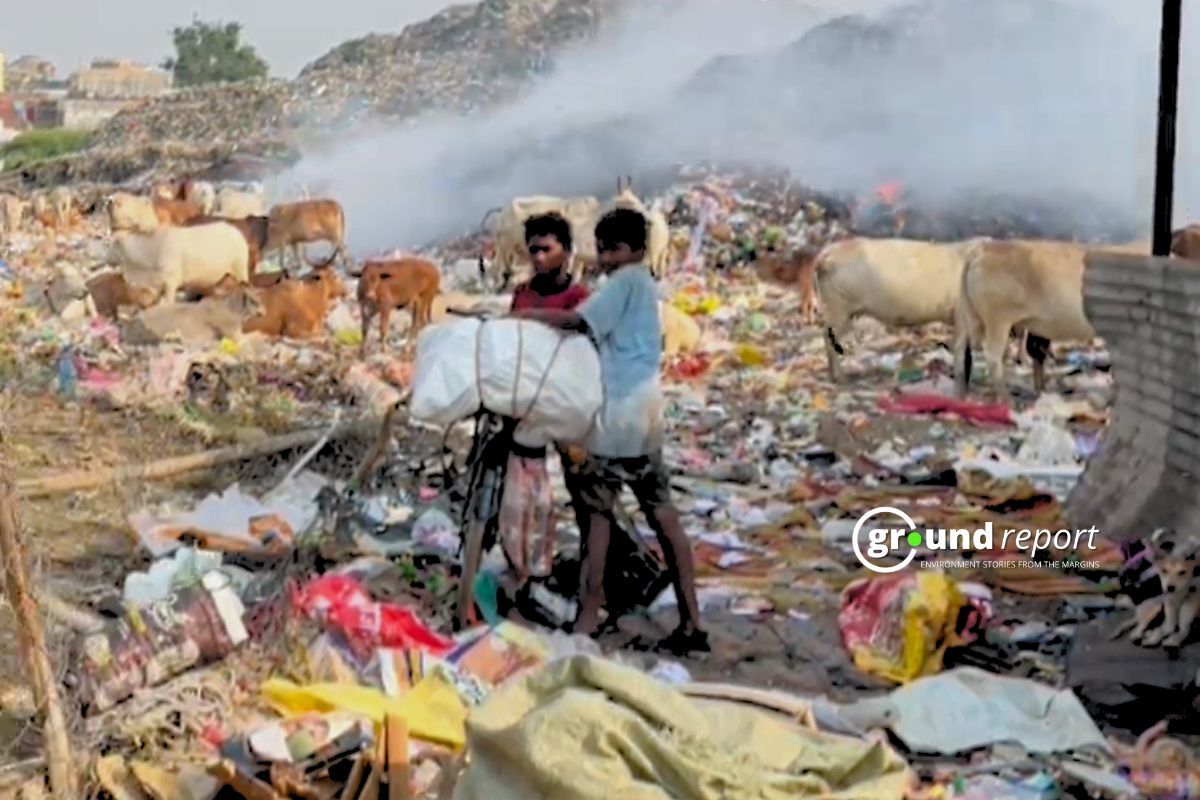
As per the Climate Vulnerability Assessment for Adaptation Planning in India using a Common Framework, 2021, “Temperature and rainfall variations can foster higher VBD occurrence.”
In addition, the impact of broken waste management is extensively written on. This compromises the health of society. People living beside the landfill site—mostly migrants and workers from low-income communities—are subject to the ill fate of the broken system. Vultures, often referred to as natural cleaners, population is declining. They are often seen flying over the heaps of garbage with kites. This decline can trigger a health crisis as well, some experts suggest.
According to the survey by Women in Informal Employment: Globalizing and Organizing (WIEGO), “water and heat breed fungi and bacteria, which attract rodents and disease-carrying insects.”
Formalising the sector
Several NGOs, like Sarthak in Bhopal Indore in Madhya Pradesh and SEWA in Gujarat, are formalising the waste management work. This system gives waste pickers a monthly salary, recognition of their work, medical allowance, and insurance, and also negotiating power with the relevant authorities. While Ahmedabad’s Upraant Foundation works on the principle of ‘Upcycling Waste, Uplifting Women.’ They recycle the waste through slum-dwelling women to make them financially independent. This is another way of providing autonomy to women from low-income communities.
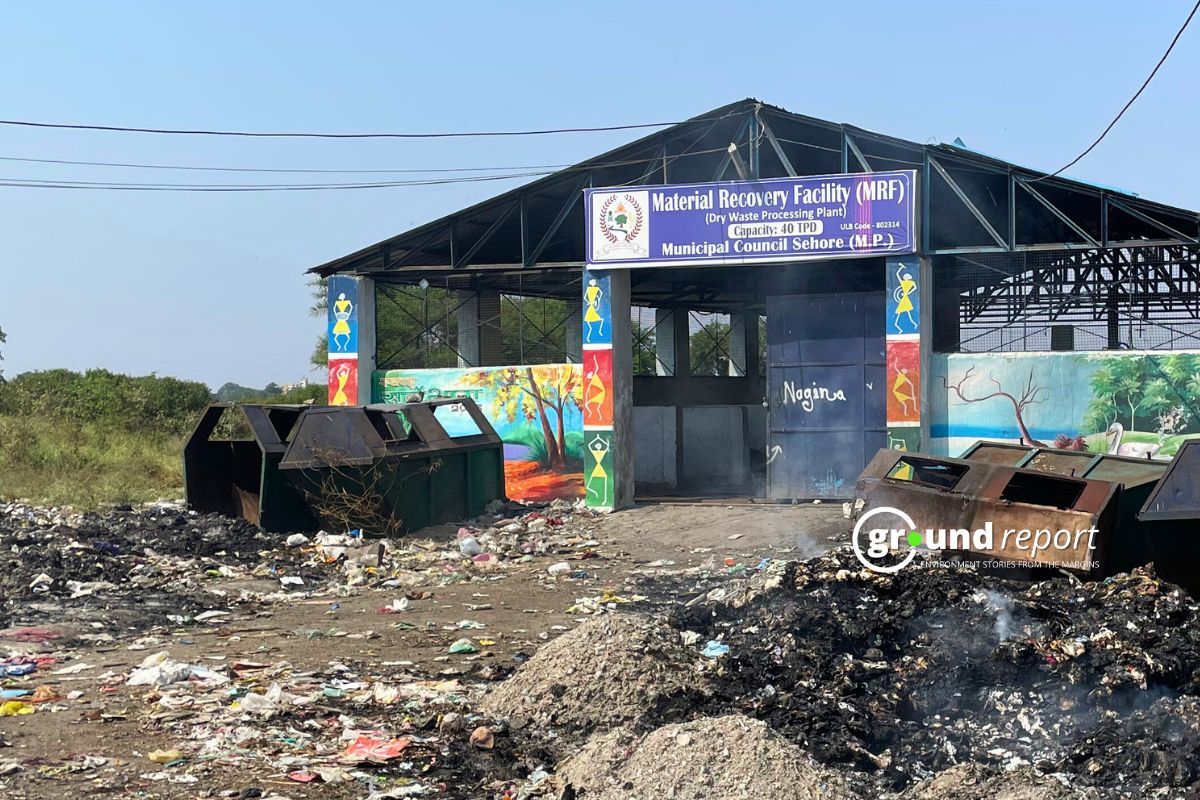
Imteyaz Ali of the Bhopal-based Sarthak NGO proposed a solution to formalize the waste management system. He suggested building MRFs (material recovery facilities) for one lakh of the population. One MRF can employ at least 20-30 waste pickers. He added that there should be ward-level collection points with 2-3 employees too. Ali, through Sarthak NGO, has been working in the sector for more than 16 years. He started in 2008, after leaving his government job. As per his estimate, there are more than 12 crore individuals in the solid waste management sector.
The urban Local Bodies (ULB) don’t effectively utilise the MRFs. He says that at least 10% work through informal waste pickers themselves. While explaining the economics of MRFs, Ali says,
“It is not expensive to build, and ULBs have money… The monitoring system has to be efficient.”
Migration and more
With the Garment Textile Cluster in Okhla-Delhi, the nearby areas have become a hub for garment recycling and segregation. Women, on the side of the roads or inside badly ventilated rooms, segregate garments, or plastics. Almost every city has a landfill site, with an entire informal sector economy settled beside it. Mostly people from low-income communities are involved in this, particularly in urban areas.
Waste picking is an easy way to make money for a migrant worker. Even Ali agrees to the same. However, he believes strict vigilance and a surveillance system can ensure that migrant workers don’t get involved with informal contractors, particularly children.
While Rashida struggles to get the children in her family admitted to the government school, she aggressively dismisses the idea of her granddaughter ever working on the landfill. Interestingly, she currently does accompany Rashida on her daily work at the site. As hinted before, the garbage mafia is infamous for physical and economic exploitation. Ali adds that to tackle the mafia, cooperatives and unions have to be strengthened for workers to exercise their rights. We have done this in Bhopal, and Indore, he concludes.
Conclusion
Climate change is impacting human lives. It has a greater impact in urban areas, which are not adaptive to extreme changes in the weather. The marginalized population in the cities disproportionately bears the brunt of the impact, or the collapse of the city’s infrastructure due to heatwaves, floods, or even untimely monsoons. These climate change-induced extreme weather events challenge the progress of SDG goals, particularly in urban ecosystems. They hamper the decades of progress made by marginalized women, who had little to no contribution to the factors leading to climate change.
“Over 90% of the country faces extreme caution or dangerous levels of harm to adaptive livelihood capacity, food grain yield, the spread of vector-borne diseases, and urban sustainability due to heat stress,” according to a study in the journal PLOS Climate. In such situations, the most vulnerable bear the brunt of such economic impact.
We have reported on the solid waste management system in several cities of Madhya Pradesh. While we try to make the system more efficient, the authorities have to ensure how to reduce waste production. In addition, even public awareness regarding the same. If the problem isn’t handled holistically, the solution will create another problem of its own.
However, for Rashida and others we interacted with, this is part of life. Amidst several struggles, some extra heat or unwanted rainfall is not something that perturbs them. Rashida is one such story; there are several more. They face the disproportional brunt of the phenomenon, i.e., climate change.
Keep Reading
Narmadapuram’s Gwaltoli gas chamber, garbage making people’s lives miserable
Sehore’ Indira Nagar colony, people live amidst burning garbage smoke
How is bio-medical waste disposed of in Sehore City?
India braces for intense 2024 monsoon amid recent deadly weather trends
Support us to keep independent environmental journalism alive in India.
Follow Ground Report on X, Instagram and Facebook for environmental and underreported stories from the margins. Give us feedback on our email id greport2018@gmail.com.
Don’t forget to Subscribe to our weekly newsletter, Join our community on WhatsApp, and Follow our YouTube Channel for video stories.


